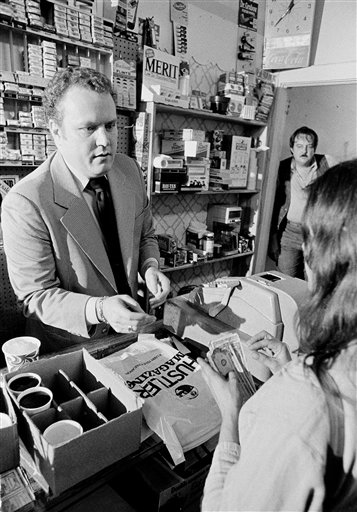In Ginsberg v. New York, 390 U.S. 629 (1968), the Supreme Court upheld a harmful to minors, or “obscene as to minors,” law, affirming the illegality of giving persons under 17 years of age access to expressions or depictions of nudity and sexual content for “monetary consideration.”
Ginsberg convicted for illegally selling content “harmful to minors”
Judge Fuld of the Nassau County District Court had convicted Sam Ginsberg, who owned a small convenience store in Long Island, New York, where he sold “adult magazines” and was accused of selling them to a 16-year-old boy on two occasions.
New York Penal Law 484-h prohibited selling “knowingly . . . any picture . . . which depicts nudity . . . and which is harmful to minors” to persons under the age of 17. The judge found that the pictures in the magazines met the depiction of nudity established as harmful to minors in Bookcase, Inc. v. Broderick (N.Y. 1966).
Ginsberg was also held accountable for the fact that he was aware of the boy’s age and of the magazines’ nudity and alleged obscene content and potential harmfulness. Although Ginsberg claimed that the state of New York did not have the power to limit the freedom of speech and press, he did not deny the harmfulness of obscenity to minors or the ability of the state to draw the line at 17.
Ginsberg argued that the state did not have power to limit freedom of speech
Ginsberg referred to several successful First Amendment challenges that had overturned a statute arguing that it violated freedom of speech:
- Meyer v. Nebraska (1923), which had struck down a statute “forbidding children to learn German.”
- Pierce v. Society of Sisters (1925), which had upheld the right of parents to send children to private school.
- West Virginia State Board of Education v. Barnette (1943), which had held that students could not be required to salute the American flag against their religious convictions.
These cases did not, however, persuade the Supreme Court
Court countered with cases that supported obscenity laws
Justice William J. Brennan Jr. countered with a number of cases that supported obscenity laws. These included these landmark decisions:
- Roth v. United States (1957), which established that “obscenity is not within the area of protected speech or press;”
- Prince v. Massachusetts (1944), which established that “the power of the state to control the conduct of children reaches beyond the scope of its authority over adults;”
- Memoirs v. Massachusetts (1966), which established definitions and characteristics of obscenity and the ability of the legislature to adapt to circumstances and change these definitions; and
- Redrup v. New York (1967) established the presentation and sale of magazines depicting nudity to persons older than 17 as lawful.
Ginsberg’s impact is reflected in that nearly every state continues to have some form of harmful to minors law on its books.
This article was originally written in 2009. Stefanie Kunze has a doctorate in political science and is a lecturer in the Department of Sociology at Northern Arizona University.

